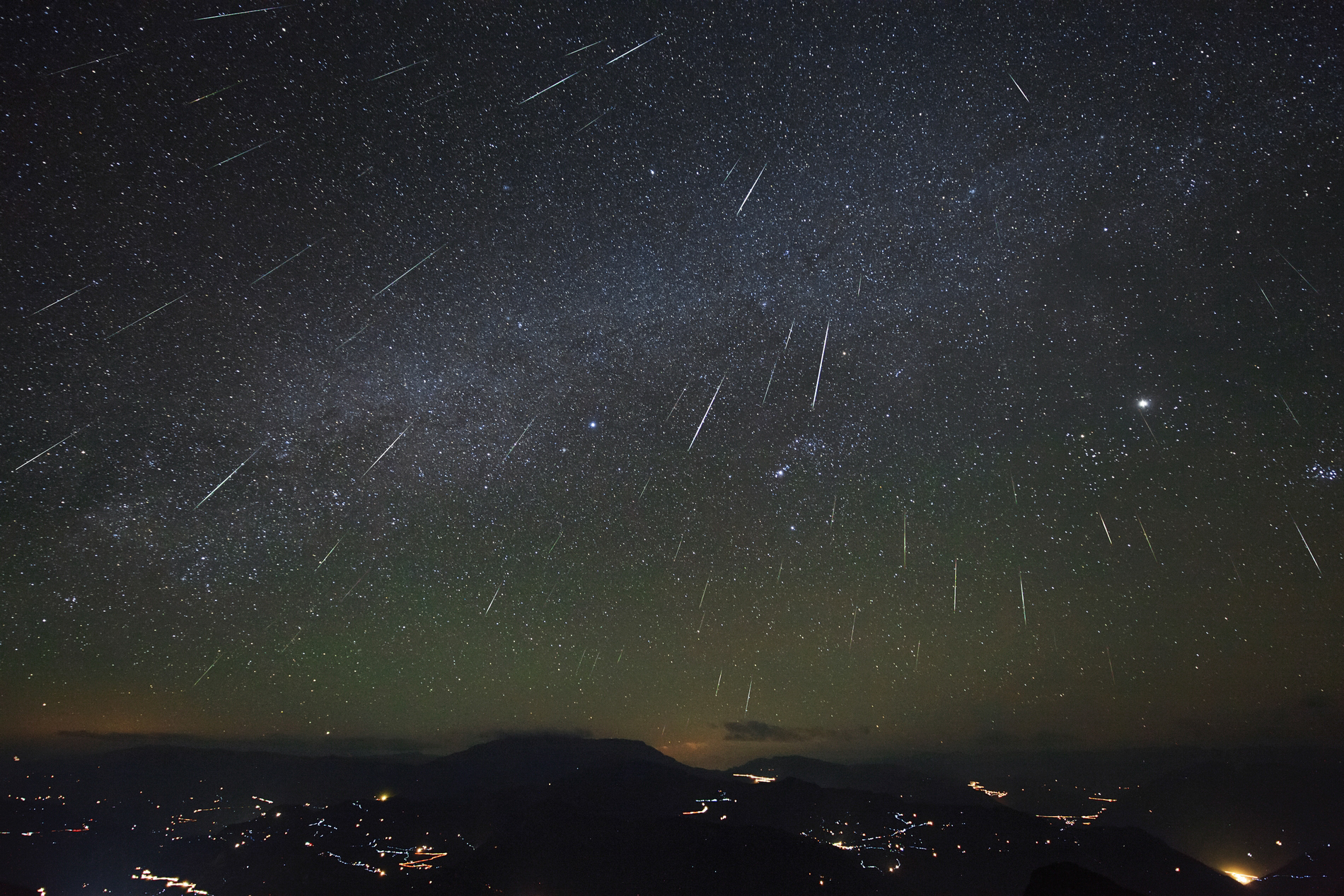 |
| The Geminid Meteor Shower 2012 (Jeff Dai) @ nasa.gov |
Astronomers are predicting that this Friday and Saturday's Camelopardalids meteor shower may be this year's most extraordinary universal display. Currently the experts are predicting between 100-400 meteors per hour, which is far more than normal showers and dwarfs the most recent Lyrid shower which peaked at a measly 20 or so meteors per hour and we are in a PRIME spot here in the states to take it all in!
 |
| Not actually 209E/LINEAR, but you get the idea... right? Halleys Comet: nasa.gov |
Easy Step By Step Directions For Viewing Camelopardalids
- Pray for a clear night.* Don't pray? Then wish. Don't wish? Then birthday's must stink at your house...
- Wait until dark on Friday, May 23. Take note of where the sun set.
- Open your front door.
- Walk outside.
- Put down a blanket and take a seat.
- Face where the sun went down.
- Turn 90 degrees to your right, it should face you north.
- Look up. If you don't see anything, try repeating the steps above every 30 minutes or so.
- Commence your thoughts of how small you are in relation to the cosmos or how cute Liv Tyler was in Armageddon as the meteors streak across the sky.
More Specific Directions For Viewing Camelopardalids
For best viewing any meteor shower your should try to get as far away from artificial light sources as possible, so go out and ruin Make Out Point for a night, sending those teens to smooch somewhere else, or just take a drive out from town, find a quiet public place that is open and sit on your hood to enjoy the show (I'm talking about the meteors here, not the smooching teenagers). If the furthest you can roam from home is your own porch or yard, just turn out as many lights as possible and find the darkest area of your own personal space.Once you've procured your favorite spot, and perhaps laid down a blanket, or popped a cold beverage it's time to terrify the children with stories of how the meteors are actually brain eating aliens preparing to land, bent on world domination and hungering for the fresh grey matter of children. No, on second thought don't do that last step... Terrifying children, although fun, can have horrible results on their adult lives.
 | |
| From Nasa's Image Gallery |
So, you've waited for dark, found a nice spot, laid down your blanket, popped open a cold beverage and found the brightest star in the sky... What's next? Well, give your eyes a few seconds to adjust, watch for streaks, say ooh and aah, and maybe take a few pictures. Wondering how to take pictures of the meteor shower, well that's a bit out of my wheelhouse, here's a good article though. The last thing to do, and this is completely optional (but I feel very important); have someone else there to revel and marvel in the celestial beauty, wonder and amaze at how distant rocks and debris can put on such a splendid show, seemingly just for you.
Useless Trivia That May Make You Sound Smart
Up there a few paragraphs above I told you the meaning of the name Camelopardalids is the giraffe. But, I'm sure that you looked at that name and thought, "How the heck did they get giraffe from Camelopardalids?" Well, here's the skinny and I'm not talking about the knobby knees of the giraffe here. The name camelopardalids is actually Roman, and it comes from their attempt to describe this crazy animal they had found in Africa. This animal, which was "part leopard" and "part camel" became the camelopardalids. As G.I. Joe would say, "knowing is half the battle", use this information tonight to sound super smart as you take in the shower.Happy meteoric trails and thanks, as always, for reading!
More Information
Slooh Community Observatory Homepage - A great place to watch the meteors, should clouds try to ruin your night.Steve's Digicams: Digital Photography 101: How to photograph meteor showers
Sky and Telescope: Ready for May's Surprise Meteor Shower?
NASA's Sweet Gallery of Meteor Shower Images - To get you in the mood